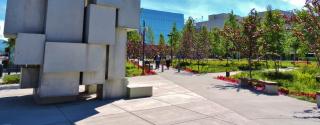Can’t tell RevPAR from ADR? To the uninitiated, these hotel industry terms might seem wonky and intimidating. We’ve put together a quick guide to help you better evaluate lodging performance in Anchorage and hopefully allow you to make more informed business decisions using the findings.
Common Lodging Terms
Occupancy – In plain terms, occupancy is the measure how full Anchorage hotels are. It’s expressed as a percentage. A higher percentage means the hotel or hotels have more people staying in them.
Average Daily Rate – The average cost of a hotel room for a single night. This is the rental income per occupied room, and it’s a dollar value. You might see this term abbreviated as ADR. A higher average daily rate means hotel guests are paying more for a night’s stay.
RevPAR – If you only watch one number, this is the one to watch. Multiply a hotel's occupancy rate by the average daily room rate, and you’ve found the revenue per available room, or RevPAR. If you manage a hotel, this is the key performance indicator by which you manage the business. A higher number is better, since it means that you are both more full, and/or people are paying a higher rate each night.
Supply – The number of rooms nights available in a given period. This tends to be relatively stable for hotels. New hotels come online only once, though from time to time rooms might be added or subtracted from supply during renovations or for other reasons. Supply is likely more elastic for vacation rentals, since those properties can be added and removed by their owners almost at will for any number of reasons.
Demand – The purest number to look at to determine if more people are visiting, or if visitors are booking more nights during their visit. It is the number of room nights actually purchased or consumed during a given period. Divide this number by supply, and you'll arrive at the occupancy rate percentage.
Revenue – The total revenue of a hotel or hotels in a given period of time. Expressed as a dollar value. This number is watched closely by Visit Anchorage and the Municipality of Anchorage, since high hotel revenue means hotels are doing well. By extension, it might indicate higher bed tax collections and more money flowing into the general fund and future tourism marketing programs.
Bed Tax Collections – Almost all hotel guests pay hotel occupancy tax on their stay. It is sometimes referred to as a room tax or bed tax. In Anchorage, the hotel occupancy tax is 12 percent. This money is collected by the municipality of Anchorage and by charter split three ways. A third goes to the municipal general fund, a third is used to service the bond debt and operations of the Anchorage Convention Centers, and a third goes to tourism marketing functions at Visit Anchorage. There are exceptions for hostels, government travel, and stays longer than 30 days.
How Lodging Data is Collected and Reported
A private company called STR (formerly Smith Travel Research) collects data regularly from individual participating hotels. There’s an almost constant stream of data, but you’ll mostly see performance summarized monthly. These reports tend to accurately capture trajectory, and paint a picture of overall hotel performance.
However, it’s not a complete picture, so it’s important to keep a few things in mind. It’s a voluntary program, so not every hotel in Anchorage participates. It also does not capture B&Bs, hostels and private room rentals. A company called AirDNA is able to provide supplemental insight into the performance of listings on Airbnb and other vacation rental sites not covered in STR data.
Separate from the STR report, the municipality of Anchorage reports on bed tax collections and actual hotel revenue quarterly. This number is the most accurate measure of revenue for hotels in the municipality, but it’s only available quarterly.


